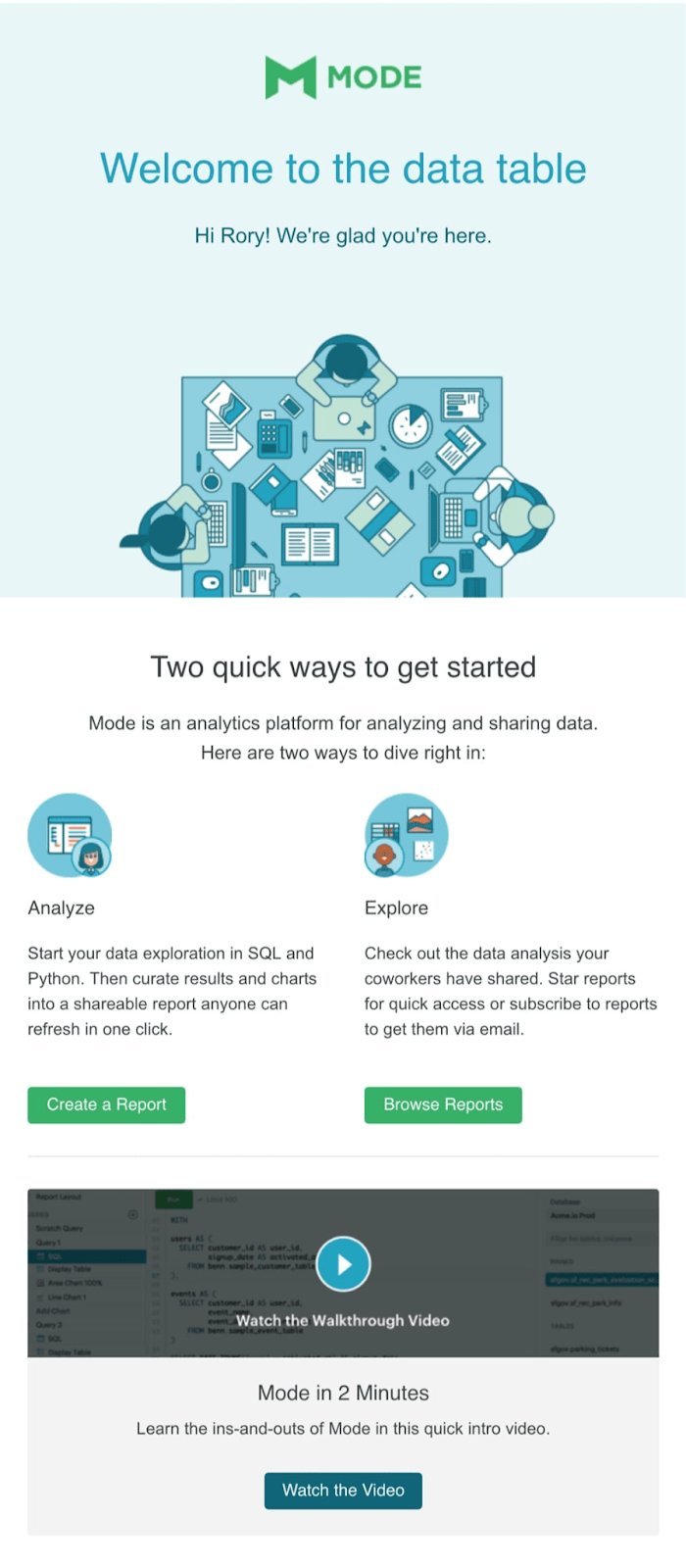It doesn’t matter what you do or what industry you’re in; email is one of the best mediums to stay connected with your customers. Perhaps you want to connect with them, say hello, or thank them. Or you have an upcoming sale and want to get the word out. Whatever your reason for sending emails, you need new and better ways to keep your customers engaged and grow revenue.
If you are looking for the most effective ways to meet your email marketing goals, here are different marketing emails that bring great results.
Most of the prospects are immediately not ready to make the purchase. This fact is reinforced by Gleanster’s research that shows that 75% of leads are not immediately sales-ready. Therefore, lead nurturing is very important to push your leads closer to the buying stage.
Welcome emails facilitate positive interaction with your customers or prospects. In fact, they have an average open rate of 50%, which is quite impressive.
Such emails are sent right when a new subscriber signs up, with an aim to give off a good first impression and introduce your products or organization without slathering on the sales pitch.
An ideal welcome email should focus on building a positive relationship and pave the way for future contact.
In the below example, Mode greets new members with a clear, concise, and informative welcome email. The messaging is to the point and explains clearly how the platform works. The video explanation makes this welcome email even more captivating.

Besides introducing your product and business, there are a few more things you can add to make the interaction even more positive:
Email newsletters are sent by businesses to stay on top of the minds of their recipients. They serve as great tools for educating customers and prospects about your business and products.
But many marketers fail to use them effectively. They just throw a few text links into a template and then send the same email message to all their recipients. Worst of all, there’s no real goal behind it.
To achieve the best results with email newsletters, you need to determine your goal. For example, you might want to nurture your existing contacts and become their first choice for products or services in your industry. Or you may want to attract new people to your list.
Newsletters are great not only for marketing purposes but also for nurturing your existing customers. You can also use email newsletters to collect valuable insights about them to improve your marketing and products.
For example, what kinds of links do they click on the most? Which email subject lines are the most effective?
As you work on your newsletter, stay mindful of the following things:
Consider the example below:
Source: Yesler
Yesler’s scrollable, one-column design looks great on mobile and has a clear goal that it centers around – data.
Dedicated emails are used to notify your target audience about an offer, such as – a new whitepaper you have released or an event that you are hosting.
They are quite similar to landing pages as they set up the context to introduce the main call-to-action.
Dedicated Emails are great for your marketing for two reasons:
Source: Unbounce
Once a lead opts into your mailing list, you want them to remain active with your brand. That’s why lead nurturing emails are so important. Lead nurturing is all about understanding your leads needs and developing relationships. That’s why when creating your lead nurturing emails; it’s important to define your buyer personas.
With nearly 80% of new leads never making a purchase, it’s important to use the right email tactics for each new lead nurturing campaign you design, which include:
These points ensure you’re providing directly useful content to all prospects at the right stage of their buying journey. Effective B2B lead nurturing emails guide customers through the sales cycle to move them down the funnel and convert them into long-term customers.
Transactional emails, aka triggered emails, are sent out to your contacts in response to their specific actions.
For instance, if you sign up for an event, once you have filled out a form, you’ll receive a transactional (thank-you) email, where you’ll get login information to join.
Transactional emails have the following purposes:
Transactional emails are automated emails for a better customer experience. They should be used to engage your audience, extend your brand, increase involvement and build trust.
Consider the example below by Beatrix. This is a trigger email in the onboarding process, and it offers value to the users by providing them specific setup instructions.
If metrics show some of your subscribers as inactive, then it may be time to send out a re-engagement email to re-ignite the spark. Re-engagement emails are sent out with the purpose of re-activating readers who have stopped engaging with your emails.
These emails help you revive relationships with your customers and recover revenue that you could have missed out on. By keeping some important points in mind, your re-engagement emails can bring great results.
Now the question arises, what are some good ways to re-engage with your customers using emails?
The below example illustrates how you can win your customer back by targeting their emotions, including an offer, and sparking their curiosity at the same time.
Source: Content.myemma
You put great efforts into building your email list; now, it’s time to nurture those contacts with the right email tactics. These are some of the email campaigns you should definitely be using. Although it is not a complete list, these are some must-have emails in a brand’s marketing arsenal and sure to bring great results.